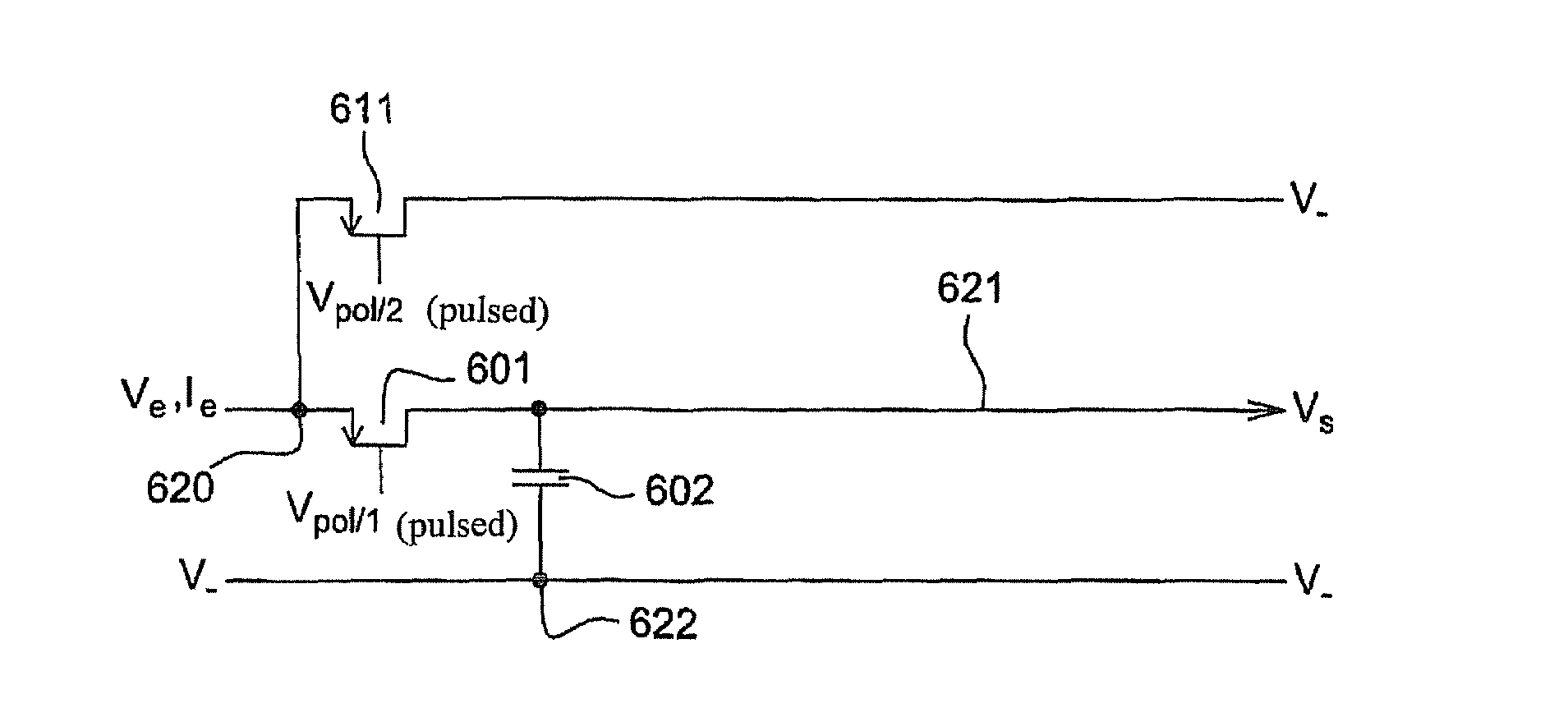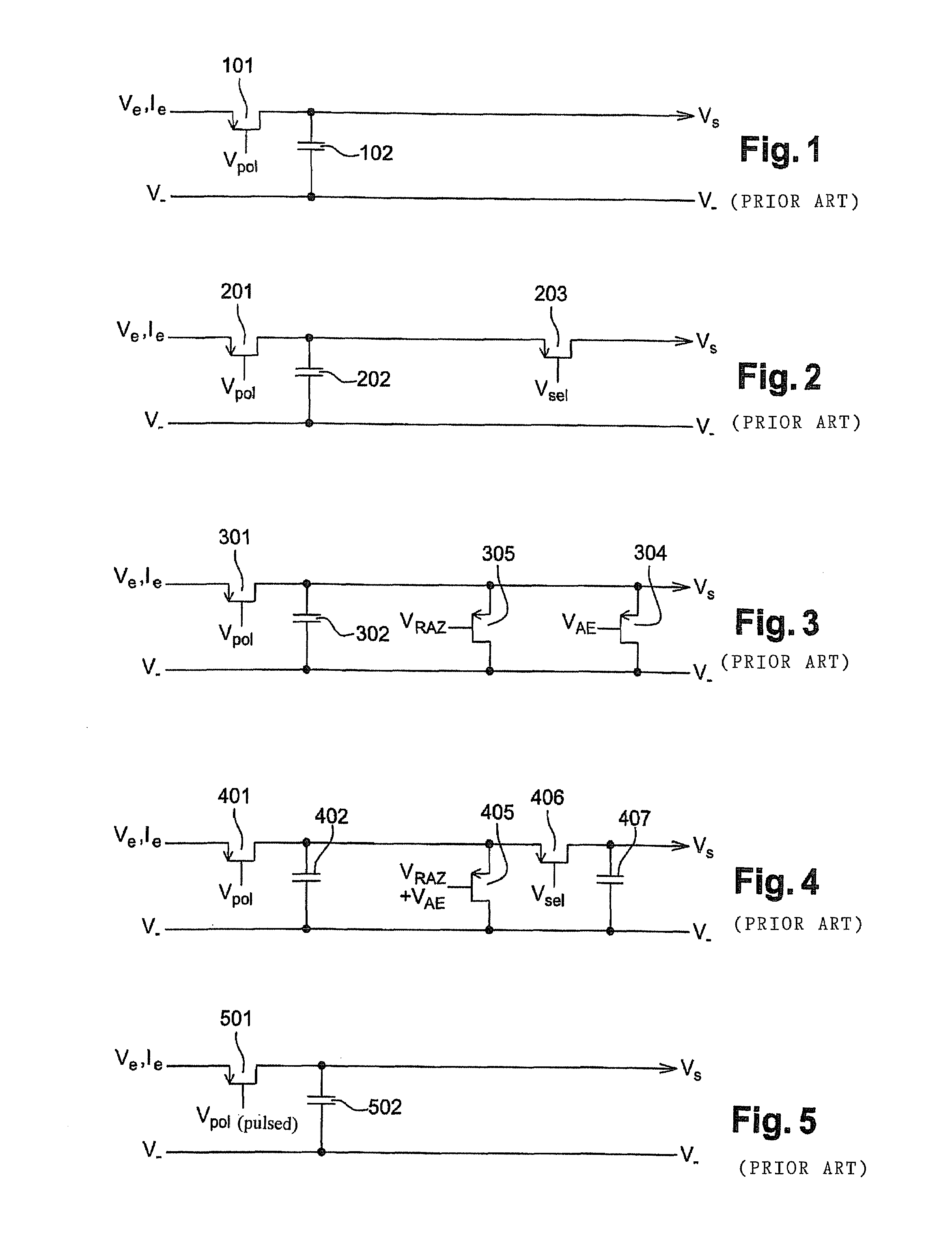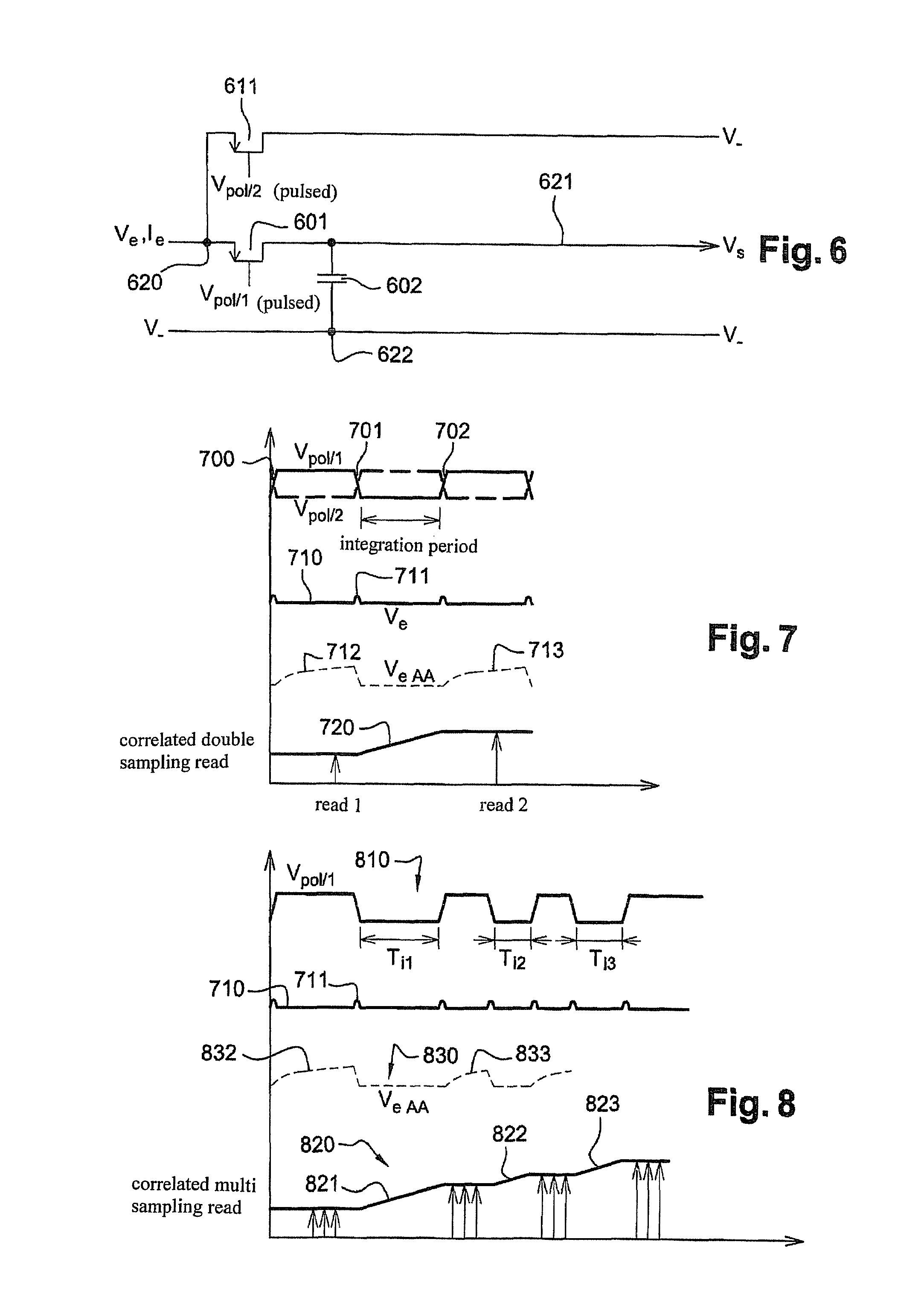Device and method for reading electric currents resulting from an electromagnetic signal detector
a technology of electromagnetic signal and detector, which is applied in the field of devices for reading electric currents, can solve the problems of photo-detectors that generally consume as little power as possible, have very short reaction and integration times, and have very short reaction and integration times, and achieve the effect of reducing the time needed to reset, and reducing the number of times of operation
- Summary
- Abstract
- Description
- Claims
- Application Information
AI Technical Summary
Benefits of technology
Problems solved by technology
Method used
Image
Examples
Embodiment Construction
[0069]FIG. 6 thus shows an input stage in accordance with an embodiment of the present invention.
[0070]In this input stage, two p-type MOS transistors 601 and 611 produced using CMOS technology are implanted in order to define a differential pair. The first and second transistors 601 and 611 are therefore mounted on two parallel branches, and have node 620 as a tie point, into which is injected the current for reading Ie, which represents the input current coming from a sensor, such as a photodiode.
[0071]According to the invention, the source of the first transistor 601 is connected to the input branch intended to inject the current Ie for reading. The drain of the first transistor 601 is itself connected to the output branch, by means of a node 621. The node 621 is therefore brought to the potential Vs, representing the output voltage.
[0072]In accordance with the invention, the gate of the first transistor 601 is connected to a polarized impulse voltage source (not shown), capable ...
PUM
 Login to View More
Login to View More Abstract
Description
Claims
Application Information
 Login to View More
Login to View More - R&D
- Intellectual Property
- Life Sciences
- Materials
- Tech Scout
- Unparalleled Data Quality
- Higher Quality Content
- 60% Fewer Hallucinations
Browse by: Latest US Patents, China's latest patents, Technical Efficacy Thesaurus, Application Domain, Technology Topic, Popular Technical Reports.
© 2025 PatSnap. All rights reserved.Legal|Privacy policy|Modern Slavery Act Transparency Statement|Sitemap|About US| Contact US: help@patsnap.com



